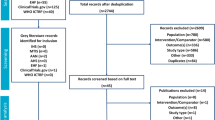Abstract
Although triptans are highly effective for the acute treatment of migraine, sustained pain-free rates—considered the optimal end-point—are in the range of 18%–27% for all triptans in clinical trials. A recently proposed strategy for treating migraine attacks is that triptans should be given early, when the pain is mild, rather than moderate or severe. Studies with different triptans have shown that early intervention can result in higher pain-free rates, together with reductions in rescue medication use and recurrence rates. However these studies suffer from methodological pitfalls: most were retrospective analyses of trials not designed to evaluate the benefit of early intervention; the definition of “early” differed from study to study; and placebo effects were not correctly evaluated. Furthermore, the disadvantages of this strategy in clinical practice, particularly the risk of medication overuse, have not been evaluated. We propose that only patients with particularly severe migraines and in whom attacks are always characterised by rapid progression of pain and other symptoms, should be advised to take a triptan as early as possible.
Similar content being viewed by others
Author information
Authors and Affiliations
Corresponding author
Rights and permissions
About this article
Cite this article
Moschiano, F., D’Amico, D., Allais, G. et al. Early triptan intervention in migraine: an overview. Neurol Sci 26 (Suppl 2), s108–s110 (2005). https://doi.org/10.1007/s10072-005-0421-x
Issue Date:
DOI: https://doi.org/10.1007/s10072-005-0421-x




